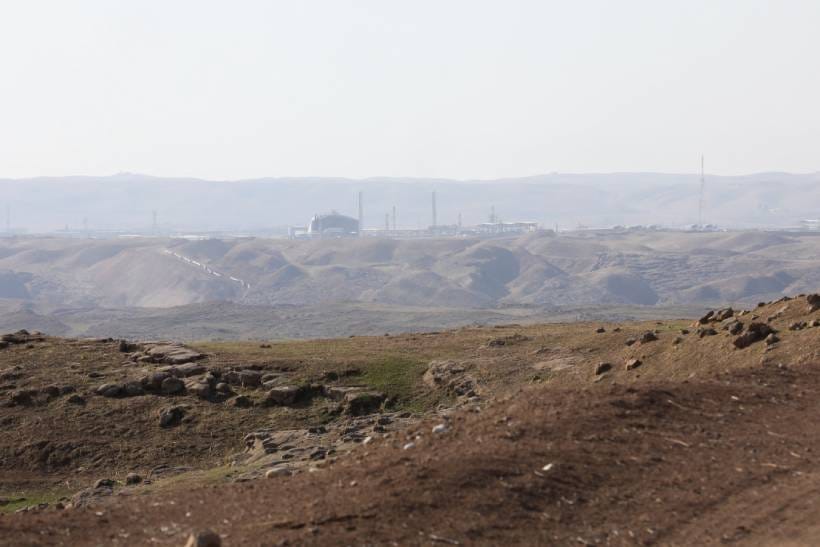The Nuri space rocket takes off from Naro Space Center in Goheung, some 205 miles south of Seoul, on Thursday. Photo by Yonhap
South Korea on Thursday confirmed the successful launch of its homegrown space rocket Nuri, which took off from Naro Space Center, with the main unit of the 13 satellites deployed establishing communication with King Sejong Station in Antarctica.
The 200-ton Nuri blasted off from the center in the country’s southern coastal village of Goheung, some 330 kilometers south of Seoul, at 1:13 a.m., slightly behind the original plan of 12:55 a.m. due to a sensor issue.
According to the KASA and the Korea Aerospace Research Institute (KARI), the main satellite, CAS500-3, made communication with South Korea’s research center in Antarctica at 1:55 a.m., allowing experts to check the unit’s condition.
“The fourth launch of Nuri was successful,” Science Minister Bae Kyung-hoon said during a press briefing at the center, noting all satellites have been put into orbit.
“This was an important turning point in which the focus of the space ecosystem shifted to the private sector from the previous government-oriented approach,” Bae added, noting the government will make efforts to become one of the world’s top five space powerhouses in an unwavering manner.
Yoon Young-bin, administrator of the Korea AeroSpace Administration (KASA), echoed the view, while stressing the government’s plan to continue efforts to bolster South Korea’s space exploration capabilities.
President Lee Jae Myung hailed the successful launch of Nuri in a social media post, calling it “a moment that opens a new chapter” in the country’s space exploration history.
Researchers will continue to monitor the main satellite through communication with other ground stations, including those in the central city of Daejeon and Norway, space authorities added.
The CAS500-3, built by Korea Aerospace Industries Co., is a medium-class satellite unit developed using the standard platform technology from the first CAS500 model.
The satellite will conduct observations of Earth’s auroras and upper atmosphere, and be used in various experiments, including the verification of three-dimensional stem cell cultivation using bio 3D-printing technology.
About two minutes after liftoff, Nuri separated the first stage, followed by the second-stage four minutes and 30 seconds into the flight.
After reaching the target altitude of 600 km, Nuri separated the main satellite, along with 12 cube satellites.
The main satellite will be tasked with conducting space science research, including measurement of space magnetic fields and plasma along with observation of auroras.
Nuri’s flight ended at 1:31 a.m., completing its 18-minute mission. It will later reenter Earth’s atmosphere and disintegrate as it falls.
South Korea first launched the Nuri rocket in October 2021, which failed to enter orbit while carrying a 1.5-ton dummy satellite. In June 2022, the rocket successfully put a Performance Verification Satellite (PVSAT) and a 1.3-ton dummy satellite into orbit.
The third launch was held in May 2023 with South Korea putting a next-generation small satellite and seven cube satellites into orbit.
The latest launch marked the first time for Hanwha Aerospace Co. to oversee the entire assembly process as part of the government’s long-term plan to hand over space technologies to the private sector.
South Korea, meanwhile, plans to carry out the fifth launch in 2026, followed by another in 2027.
Yoon said KASA will seek to secure additional funding beyond the sixth launch.
“We are planning to secure funds for the seventh launch (in 2028) as part of efforts to advance Nuri’s performance, although it has not been confirmed,” Yoon said, noting the administration aims to launch the rocket at least once every year starting with the eighth launch.
KARI noted Hanwha Aerospace will take on a broader role in the fifth and sixth launches in terms of launch and operation.
“Currently, Hanwha Aerospace is playing a secondary role (in the area), but it will take a more proactive role in the fifth and sixth launches and receive technology transfers related to the launch process,” said Park Jong-chan, director of the Korean Launch Vehicle Enhancement Program at KARI.
Park added that while the government does not plan to charge for satellites loaded onto Nuri for public purposes through the sixth launch, KARI will coordinate with KASA on how to assess costs when the launch is led by the private sector starting with the seventh launch.
Following the liftoff, spectators at a launch viewing site at the Naro Space Center erupted in cheers, lifting their phones to capture the historic moment in photos and videos.
Park Sung-wook, 40, who traveled from the central city of Dangjin with his son, said observing the launch in person was “overwhelming,” adding, “We came here at 3 p.m. yesterday to wait, and it was absolutely worth it.”
Kim Do-yun, a 22-year-old university student who visited Goheung with friends, said he had worried the rocket might be difficult to see at night, “but it was even clearer than I had expected, which was surprising.”
Copyright (c) Yonhap News Agency prohibits its content from being redistributed or reprinted without consent, and forbids the content from being learned and used by artificial intelligence systems.








